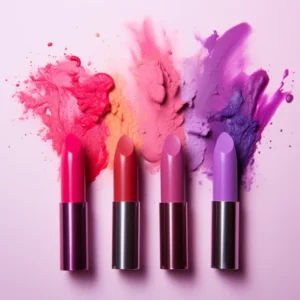The history of blushes and bronzers is a fascinating journey through time, reflecting the changing ideals of beauty and the evolving techniques used to sculpt and define the face. From ancient practices to modern innovations, these cosmetic staples have played a significant role in enhancing facial features and contributing to the artistry of makeup. In this exploration, we delve into the rich history of blushes and bronzers, tracing their origins, cultural significance, and the transformative impact they’ve had on the canvas of the human face.
Ancient Radiance: The Origins of Blushing Beauty
The use of blush-like substances can be traced back to ancient civilizations, where natural pigments were applied to the cheeks to mimic the healthy flush of youth. In ancient Egypt, both men and women used red ochre and clay to add a touch of color to their cheeks. The rosy glow was associated with vitality and good health. Similarly, in ancient Rome and Greece, crushed berries and natural dyes were applied to achieve a radiant complexion.
Renaissance Bloom: Symbolism and Elegance
During the Renaissance, makeup took on a symbolic and artistic significance. Blushes made from crushed flowers and plant extracts were used not only to add color to the cheeks but also to symbolize purity and virtue. The delicate application of blush became a mark of refinement, with women aspiring to achieve a subtle, rosy glow that conveyed both health and grace.
Victorian Grace: Rosy Complexions and The Language of Flowers
In the Victorian era, the language of flowers extended to the world of cosmetics. Blushes, often made from crushed petals, were applied to achieve a soft and rosy complexion. The symbolic meanings associated with different flowers influenced color choices. The delicacy of a woman’s blush was considered a reflection of her modesty and virtue, aligning with the societal norms of the time.
The Golden Age of Hollywood: Sculpting with Shadows and Highlights
The glamour of Hollywood’s Golden Age brought a new dimension to facial sculpting. Makeup artists utilized blushes strategically to enhance the contours of actors’ faces on the silver screen. The use of shadows and highlights became an integral part of the makeup process, contributing to the iconic looks of stars like Marilyn Monroe and Audrey Hepburn. Blushes were no longer just about adding color; they became tools for sculpting and defining facial features.
The Swinging Sixties: Pop of Color and Youthful Vibes
The 1960s witnessed a departure from the subtle blushes of previous decades. Pop art influences and the spirit of youth culture brought about a desire for vibrant and playful looks. Bold, pigmented blushes in shades of pinks and corals became a statement, reflecting the energetic and rebellious atmosphere of the era. The emphasis shifted from modesty to self-expression.
The Natural Movement: Bronzers and Sun-Kissed Glow
In the 1970s, the beauty ideal shifted toward a more natural and sun-kissed look. Bronzers gained popularity as a way to achieve a tanned complexion without sun exposure. The focus was on creating a warm and healthy glow, with bronzer applied strategically to areas where the sun would naturally hit the face. This marked a departure from the rosy cheeks of previous decades.
Contouring Craze: Precision and Definition
The 21st century brought about a contouring revolution, and blushes played a crucial role in sculpting faces to perfection. Influenced by makeup artists and social media, contouring and highlighting became mainstream techniques. Blushes were used not only to add color but also to define cheekbones and create dimension. The market saw an influx of contour kits and palettes catering to a diverse range of skin tones.
Future Glow: Customization and Inclusivity
As we look to the future, the world of blushes and bronzers is likely to focus on customization and inclusivity. Beauty brands are increasingly emphasizing diverse shade ranges and formulations that cater to a broad spectrum of skin tones. The use of technology, such as augmented reality, may also play a role in helping individuals find the perfect blush and bronzer shades for their unique features.
Conclusion: A Palette of Possibilities
The history of blushes and bronzers is a vibrant tapestry that weaves through time, cultures, and shifting beauty ideals. From the symbolic rosy cheeks of ancient civilizations to the precision contouring techniques of today, these cosmetics have evolved into versatile tools for self-expression and enhancement. As we navigate the ever-changing landscape of beauty, blushes and bronzers continue to offer a palette of possibilities, inviting individuals to sculpt, define, and celebrate the inherent beauty of their faces across eras.


